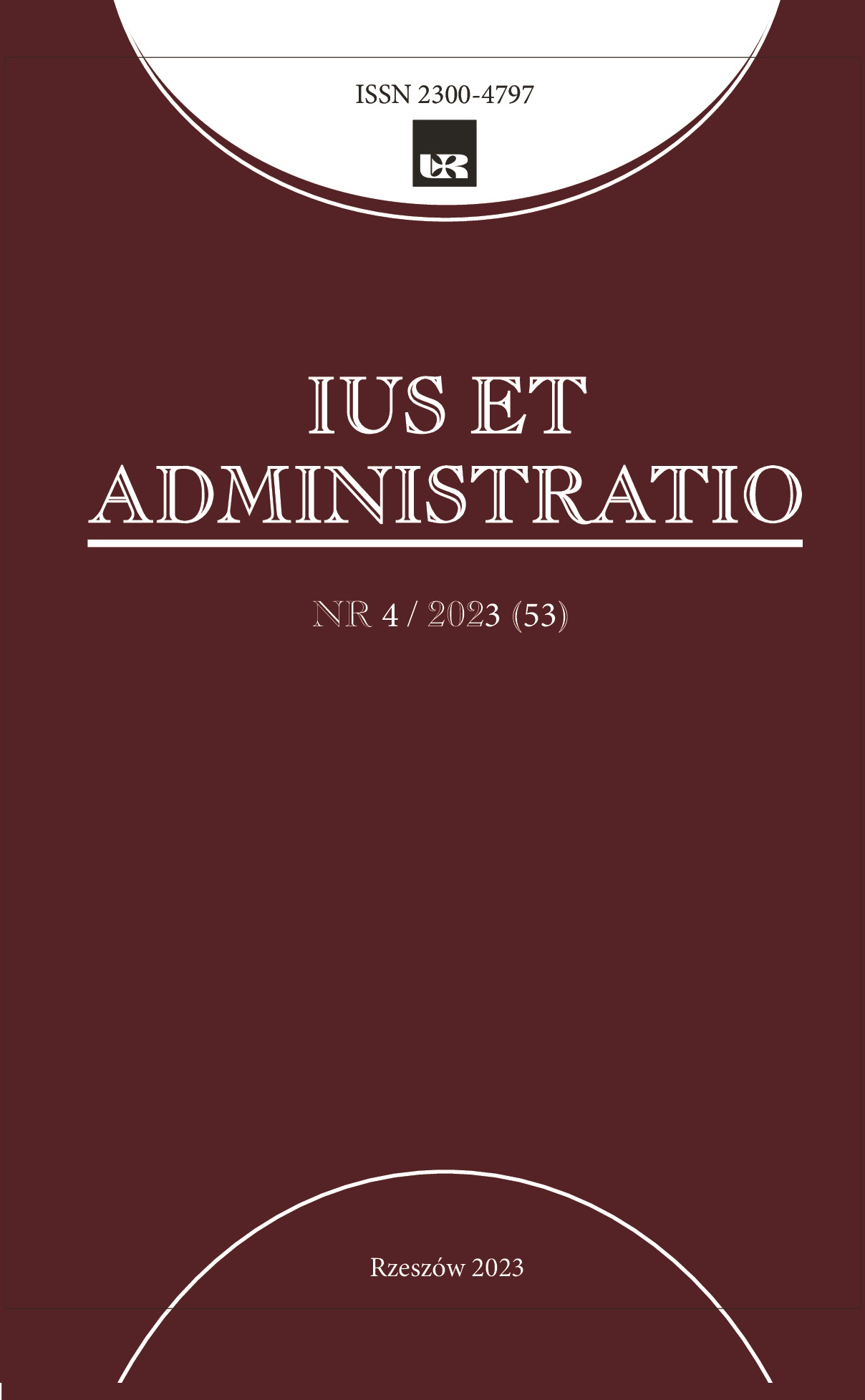Assumptions of the Schengen Borders Code and the Schengen Information System and their role in preventing illegal border crossings
DOI:
https://doi.org/10.15584/iuseta.2023.4.13Keywords:
Schengen Border Code, illegal border crossing, document forgery, Schengen Information SystemAbstract
On December 21, 2007, Poland joined the Schengen Zone. The decision to abolish controls at the internal borders of the EU and the accession of nine new member states to the Schengen Zone was one of the most significant steps toward the full realization of European integration. The expansion of the Schengen Zone contributed significantly to the construction of a united Europe based on mutual trust, collectively striving to maintain a high level of security. The Schengen Agreement’s provisions eliminated controls for individuals crossing borders between member states of the agreement while strengthening police, judicial, security, and asylum policy cooperation. The main focus of this article is on the provisions of the Regulation (EU) 2016/399 of the European Parliament and of the Council of March 9, 2016, concerning the Union Code on the rules governing the movement of persons across borders, also known as the Schengen Border Code. The primary objective is to highlight this Code as a tool for preventing the illegal crossing of Schengen Zone borders, which is closely related to combating crimes against document credibility. The publication also addresses issues related to the functioning of the Schengen Information System.
Downloads
References
Figiel E., Mierzwińska-Lorencka J., Kazus 40 [in:] E. Figiel, J. Mierzwińska-Lorencka, Prawo karne materialne. Kazusy dla aplikantów, Warszawa 2013.
Goc M., Ustawa o dokumentach publicznych potrzebna od zaraz, “Człowiek i Dokumenty” 2016, No. 41.
Grochowski L., Straż Graniczna w aspekcie układu z Schengen, “Zeszyty Naukowe WSOWL” 2011, No. 3(161).
Jankowski W. [in:] Kodeks wykroczeń. Komentarz, ed. T. Grzegorczyk, Warszawa 2013.
Kołecki H., Technicznokryminalistyczne badania autentyczności dokumentów publicznych nieniszczącymi wielospektralnymi technikami optycznymi za pomocą wideospektrokomparatora VSC-1, Poznań 2002.
Kubiś-Kuras A., Wiza i jej znaczenie w systemie bezpieczeństwa państwa, “Człowiek i Dokumenty” 2020, No. 59.
Mozgawa M. [in:] M. Budyn-Kulik, P. Kozłowska-Kalisz, M. Kulik, M. Mozgawa, Kodeks wykroczeń. Komentarz, Warszawa 2009.
Mróz B., System ochrony granicy państwowej wobec współczesnych zagrożeń bezpieczeństwa państwa, „Journal of Modern Science” 2016, Vol. 2/29.
Pływaczewski E.W., Bezpieczeństwo obywateli – prawa człowieka – zrównoważony rozwój, Białystok 2017.
Semków D., Fałszerstwo dokumentów podróży – skala charakter i zapobieganie zjawisku w działaniach Unii Europejskiej, “Ius et Administratio” 2019–2020, No. 1–4/(43/1).
Co to jest biuro SIRENE?, https://policja.pl/pol/sirene/biuro-sirene/7842,Co-to-jest-BIURO-SIRENE.html [access: 24.04.2023].
Czym jest i jak działa SIS, https://home-affairs.ec.europa.eu/policies/schengen-borders-and-visa/schengen-information-system/what-sis-and-how-does-it-work_pl [access: 22.04.2023].
Co to jest system informacyjny Schengen?, https://policja.pl/pol/sirene/sis/12473,Co-to-jest-System-Informacyjny-Schengen-SIS.html [access: 22.04.2023].
Co to jest System Informacyjny Schengen, https://gdynia.policja.gov.pl/m17/informacje/wspolpraca-miedzynarodo/77233, SIS.html [access: 22.04.2023].
System Informacyjny Schengen, https://home-affairs.ec.europa.eu/policies/schengen-borders-and-visa/schengen-information-system_pl [access: 11.07.2023].
Downloads
Published
How to Cite
Issue
Section
License
Copyright (c) 2023 Ius et Administratio

This work is licensed under a Creative Commons Attribution-NonCommercial-NoDerivatives 4.0 International License.

